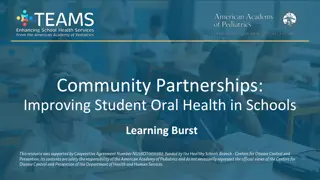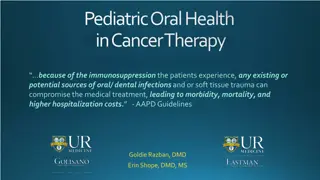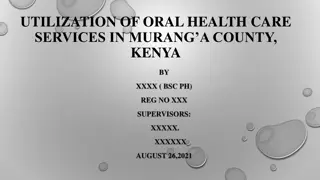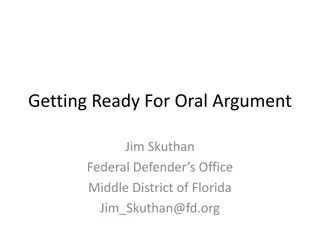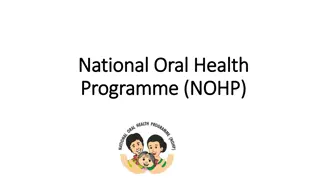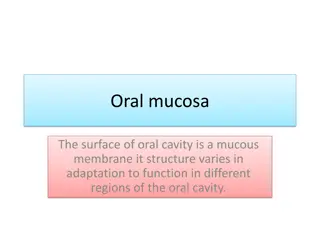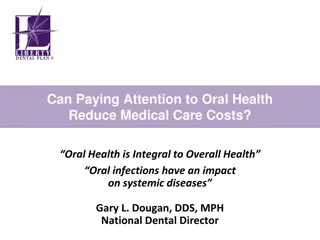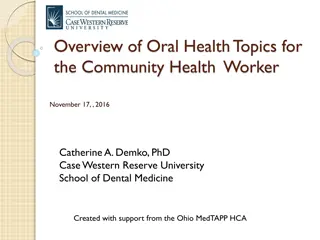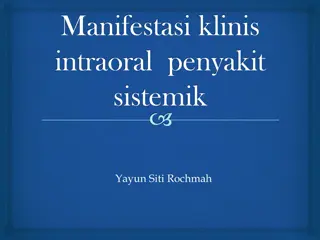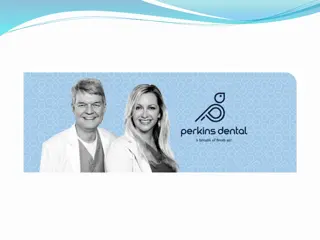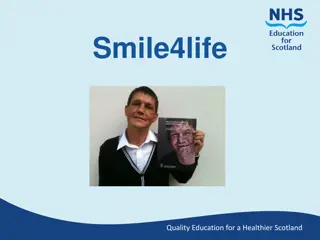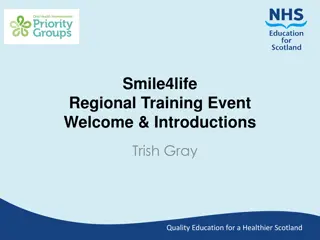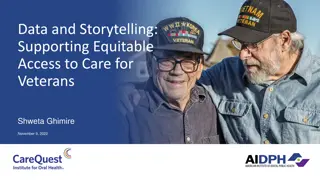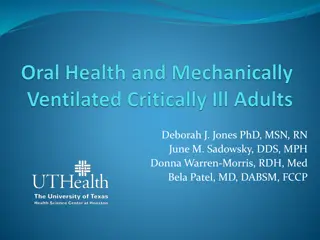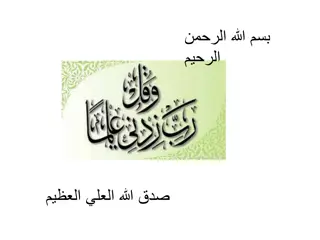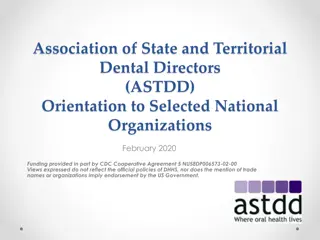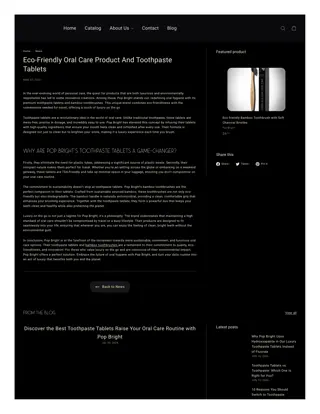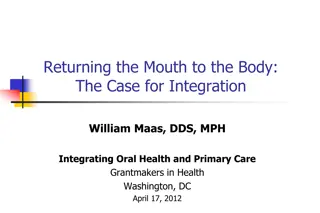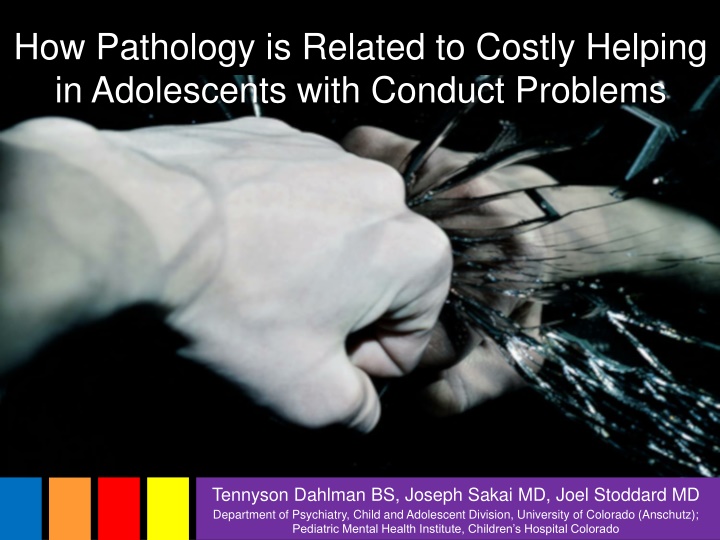
Relationship Between Pathology and Costly Helping in Adolescents with Conduct Problems
Explore the intricate connection between pathology and costly helping in adolescents with conduct problems, investigating how variables like money gain/loss and pathological traits influence decisions to donate or take. Research questions delve into the impact of likelihood of donating, modulating pathology hypotheses, and subject grouping based on clinical variables. Methods and analyses such as the LmodelHT ratio analysis are employed to unravel these complex dynamics.
Download Presentation

Please find below an Image/Link to download the presentation.
The content on the website is provided AS IS for your information and personal use only. It may not be sold, licensed, or shared on other websites without obtaining consent from the author. If you encounter any issues during the download, it is possible that the publisher has removed the file from their server.
You are allowed to download the files provided on this website for personal or commercial use, subject to the condition that they are used lawfully. All files are the property of their respective owners.
The content on the website is provided AS IS for your information and personal use only. It may not be sold, licensed, or shared on other websites without obtaining consent from the author.
E N D
Presentation Transcript
How Pathology is Related to Costly Helping in Adolescents with Conduct Problems Tennyson Dahlman BS, Joseph Sakai MD, Joel Stoddard MD Department of Psychiatry, Child and Adolescent Division, University of Colorado (Anschutz); Pediatric Mental Health Institute, Children s Hospital Colorado
Prosocial Behaviors Altruism Background
Subject Doesnt Get the Money Donates Money Subject OR Charity Doesn t Get the Money Take Money Subject Background
Higher Callous-Unemotional Traits Higher Psychopathic Traits Less Costly Helping Background
How might the amount of money that the subject gains vs. how much they lose to donating matter? AND How might pathology impact the decision to take vs. donate? Research Questions
Likelihood of Donating Ratio Likelihood of Donating Modulates Pathology Hypotheses
Subject Grouping Clinical Variables M(SD) Clinical Diagnosis N(%) Callous-Unemotional Traits (ICU) Oppositional Traits (CBCL) Subjects-LPE 21 (32%) 31.30 (6.11) 6.3 (2.83) Subjects-no LPE 21 (32%) 21.18 (5.36) 3.9 (3.16) Controls 24 (36%) 17.89 (6.59) 0.4 (1.24) Methods
Offer (5 sec) Decision (1 sec) Feedback (4 sec) Jittered AlAn Game
Subject Stake Red Cross Stake Ratio Analysis Computing Ratio
Ratio LmodelHT<-glmer(Donate~logRatio*cICUt+logRatio*cOPPt+(1|Subject), + family=binomial,data=na.omit(patho2[,c('cICUt','cOPPt','logRatio', + 'Donate','Subject')]),control=glmerControl('bobyqa'),nAGQ=10) Likelihood of Donating Pathology Analysis GLMER
Game Tired Anxious Subject Subject Subject Uncomfortable Analysis GLMER
Variable Intercept Ratio ICU traits Estimate -1.06 1.27 -0.09 Standard Error 0.38 0.03 0.05 z p-value 0.00** 0.00*** 0.07 -2.82 40.16 -1.80 OPP traits logRatio x CU traits logRatio x OPP traits *p 0.05 **p 0.01 ***p<0.001 -0.04 0.04 -1.08 0.28 -0.03 0.00 -8.98 0.00*** 0.01 0.00 3.00 0.00** Results
Low Average High Low Average High Low Average High Results
Altruism Pathology Prosocial Behaviors Conclusions
Neuroimaging Diagnostic Tool Future Directions
Joel Stoddard, MD Joseph Sakai, MD Merlin Ariefdjohan, PhD, MPH Emmaly Perks, MA Douglas Novins MD Chair of the Pediatric Mental Health Institute Dominic Martinez EdD Director of Inclusion and Outreach, CCTSI Acknowledgements
Thank You for attending my PURPLETalk

